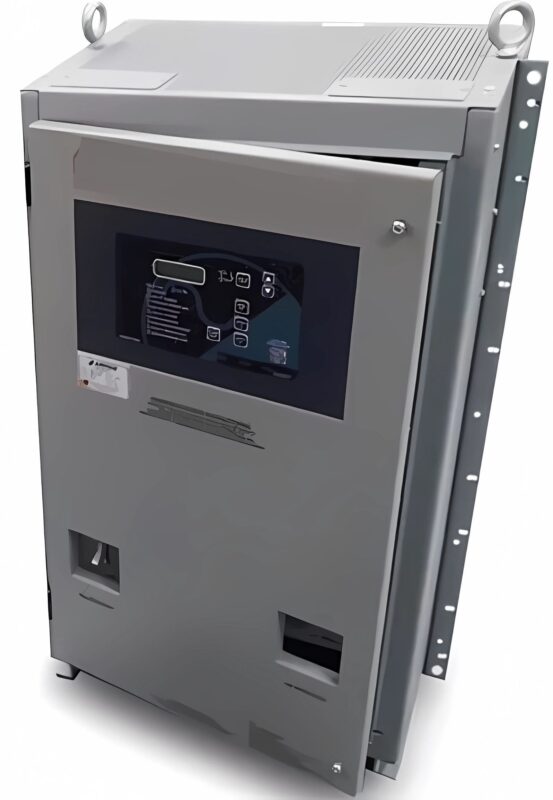AC/DC Power
AC-DC rectifier unit with ferroresonant regulation
AC-DC rectifier unit are the most crucial components of the power system for telecommunications. They are responsible for converting alternating current into direct current for use by telecommunications equipment.
This energy must be stable and regulated to ensure that all its parameters remain constant despite fluctuations in the electrical grid and loads.
This stability is achieved through various forms of regulation, including AC-DC rectifiers with thyristor regulation, which have evolved to those employing ferroresonance technology, a topic we will discuss shortly.
What does ferroresonance-controlled regulation in AC-DC rectifier units consist of?
Ferroresonance-controlled regulation is based on a transformer with an iron core, the interior of which has certain reactance characteristics.
This causes its flux lines to have differences in amplitude and phase, making it ideal for constant and stable output regulation.
Here, we present the principle of a classic resonant circuit found in rectifiers with this type of control regulation.

Where:
S1, automatic switch that operates according to the magnitude
L1, self-inductance of materials such as conductors
T, ferroresonant transformer
C1, capacitor connected in parallel in the transformer’s secondary, forming a parallel resonant circuit.
Under these conditions, it resonates with the input frequency of the AC line, allowing the output to have a very stable waveform. Additionally, it will have a very low ripple factor.
Operation of ac-dc rectifier units with ferroresonance control
Ferroresonance in rectifiers operates with capacitor C1 acting at the output. This ensures that the emitted signal is independent of the input voltage and frequency.
Thus, effective control is exerted to keep the waveform consistently within the predetermined voltage and current parameters. The described process can be observed in the following block diagram.

One of the significant advantages of ferroresonance-controlled regulation is that the voltage and current in the load are very well controlled. However, if an error occurs in the generation, a signal is sent to the triggering circuit, which then sends pulses to the tank circuit.
On the other hand, the transformer makes ferroresonant AC-DC rectifiers very robust, reliable and durable. They are even highly resistant to low-quality input power.
But not everything is positive, as its main drawback is the lack of precision in adjusting the output waveform. This creates the need for very precise controls, which raises the cost of the equipment.
On the other hand, AC-DC rectifiers based on ferroresonance-controlled regulation are much less bulky than thyristor-controlled rectifiers. This allows for greater power in smaller spaces.
This is our brief overview of ferroresonant AC-DC rectifiers. We can only say that it has distinguished itself for its quality. Obviously, this characteristic is significantly influenced by being manufactured by a top-notch company.
Look forward to our next article, which we are already drafting, titled High-frequency regulation AC-DC rectifiers In it, we will explain the main characteristics of these devices.
We offer you the Sizing and design course for dc power systems for telecommunications and critical systems. This course explains everything you need to know to design systems with these devices. You can see its content here.
At energydcac, we have a lot of interesting content for you about solar energy and telecommunications. Don’t miss it!

